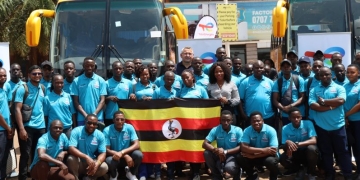
Food forestry, also known as forest gardening or agroforestry, is an innovative and sustainable agricultural system that mimics natural forest ecosystems. It integrates a variety of plant species, including trees, shrubs, perennials, and annuals, to create a self-sustaining environment that promotes biodiversity, soil health, and food security. In Uganda, particularly in Kitabu Sub-County of Kasese District, food forestry presents a viable solution for sustainable agriculture. However, its adoption faces numerous challenges that need to be addressed for its successful implementation.
Food forests are multi-layered agricultural systems that consist of the following key components: canopy layer with tall trees such as mango, jackfruit, and avocado providing shade and protection; understory layer with smaller trees including coffee and bananas thriving in the shade of the canopy; shrub layer with edible shrubs such as berries and cassava enhancing biodiversity; herbaceous layer with vegetables and herbs like basil, spinach, and amaranth growing close to the ground; ground cover layer with low-growing plants such as sweet potatoes and pumpkins preventing soil erosion; root layer with underground crops like carrots, yams, and ginger contributing to food diversity; and vertical layer with climbing plants like beans and passion fruit optimizing vertical space. These layers work together to create a self-sufficient ecosystem that requires minimal maintenance once established.
Food forestry offers a range of benefits, including increased biodiversity supporting a variety of plant and animal species, improved soil health through natural decomposition of organic matter enriching the soil, water conservation with tree roots enhancing water retention and reducing runoff, climate resilience with diverse crops withstanding extreme weather conditions, and sustainable food production providing year-round harvests, ensuring food security. For example, the Karambi Group of People with Disabilities in Western Uganda has successfully implemented food forestry, planting over 32,644 trees to support 138 households. They have also trained 686 school children and 46 teachers on permaculture techniques.
Despite the benefits, several challenges hinder the widespread adoption of food forestry in Kitabu Sub-County. Land conflicts and ownership disputes are prevalent due to historical disputes and inequitable land distribution. Research shows that 92.5% of respondents acknowledge that land is unfairly allocated, with 62.2% of land controlled by men. These conflicts prevent communities from collectively engaging in long-term agricultural projects. Environmental degradation and climate change have contributed to frequent floods and landslides in the region. The Kasese District Senior Agricultural Officer has urged farmers to adopt terracing and agroforestry techniques to mitigate these environmental challenges. Limited awareness and training among farmers make them hesitant to adopt this practice. Without proper education on its benefits and maintenance, many initiatives fail due to poor management. Financial constraints and resource availability pose additional barriers as establishing a food forest requires investments in seedlings, soil amendments, and irrigation systems, which most smallholder farmers in Kitabu Sub-County cannot afford. Policy and institutional barriers further discourage adoption, as Uganda’s existing land use policies do not fully support the integration of food forestry into mainstream agriculture. Bureaucratic delays and lack of government incentives discourage farmers from adopting this approach.
To address these challenges, a multi-faceted approach is required, including resolving land disputes by establishing local mediation programs to fairly distribute land for communal food forestry projects, encouraging environmental conservation programs such as afforestation, terracing, and sustainable land use practices, organizing workshops and farmer training programs to promote food forestry, introducing microloans and subsidies to assist farmers in acquiring seedlings and tools, and advocating for policy reforms that integrate food forestry into national agricultural strategies.
Food forestry holds immense potential to revolutionize agriculture in Kitabu Sub-County and beyond. By addressing land conflicts, environmental degradation, and resource constraints, stakeholders can create a resilient agricultural system that ensures food security and environmental sustainability. Through education, financial support, and policy reforms, food forestry can become a cornerstone of sustainable farming in Uganda.
The writer, Hellen Masika is a Community Mobilizer at Centre for Citizens Conserving Environment & Management (CECIC)










Discussion about this post